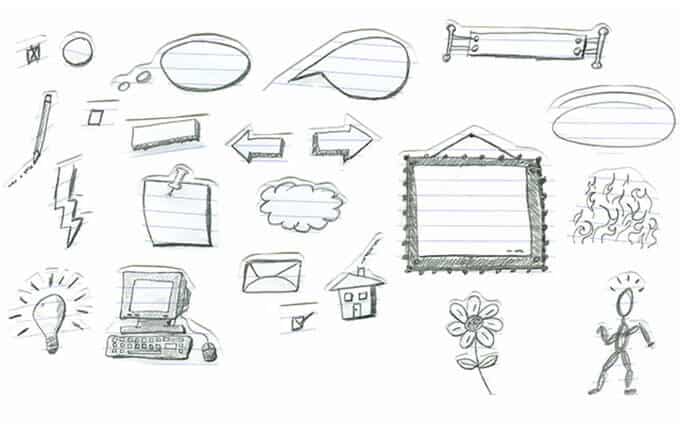One of my goals for the new year is to take up doodling.
That might sound a bit silly. Frivolous, even. But there is a reason for it, and a reason I’d recommend everyone become a doodler, at least a little.
Research over the last few years consistently has found that the simple act of doodling increases a person’s ability to retain information, aids in learning new concepts and stimulates the right hemisphere of the brain, helping to fire the imagination.

Image Credit Open College
According to the BBC, human beings may just be hard-wired to doodle.
Sunni Brown, author of The Doodle Revolution and Gamestorming, criticizes the idea of doodling as a useless endeavor, instead offering this re-definition of doodling at the 2011 TED conference:
Doodle: to make spontaneous marks to help yourself think.
In her TED Talk, Brown explains that learning and memory are accomplished in four distinct ways: visual, auditory, kinesthic and reading/writing. Learning requires engaging at least two of those. Doodling uses all four. You are listening to new information, writing it down and reading it, adding visual reminders and engaging your motor functions.
(Fast Company has an excellent piece exploring more of Brown’s ideas on doodling as a means of learning and improving memory.)
A study by Plymouth University in the UK found that information recall improved 29 percent among participants who doodled while listening to a tape of names and locations compared to participants who did not doodle.
“If someone is doing a boring task, like listening to a dull telephone conversation, they may start to daydream,” said study researcher Professor Jackie Andrade, Ph.D. “Daydreaming distracts them from the task, resulting in poorer performance. A simple task, like doodling, may be sufficient to stop daydreaming without affecting performance on the main task.”
Researcher Shaaron Ainsworth from the University of Nottingham has also conducted studies testing the use of doodling as a learning tool in science education. Her conclusion: Doodling aided in keeping students engaged, taught them visual reasoning skills and was an important part of learning strategies.
And in yet another study, this one performed in Australia, researchers reported that combining drawing and writing improved childrens’ writing skills.
Apparently there is even a term for the practice of combining doodling and note-taking for learning and idea-generation. It’s called “sketchnoting,” about as perfect a way to describe it as I’ve ever heard. It also has become a field of professional study and consulting known as “visual practice.”
One visual practitioner, Patti Dobrowolski, advocates doodling not only as a way to learn and remember, but also to make effective changes in corporate cultures and in personal lives. Drawing goals helps people envision them, then enact those visions, she says.
According to Dobrowolski:
Goal-setting often stalls because we have so much data filling our brain that it gets overloaded and can’t remember what to focus on, but when you DRAW a picture of what you desire, you remember it better by 65%!
Add into your success quotient the chemistry your body makes when you are imagining and drawing—that serotonin/oxytocin elixir helps guide that pattern-making brain of yours into focusing on what you want.
Now I just have to figure out how to doodle my goal of becoming a doodler. Maybe this video from Art ala Carte can help me get started.
The most important lesson so far: “There’s no rhyme or reason with doodling; it’s just kind of what’s in your head.”
Of course, I’d be in good company. Mark Twain, Franz Kafka, Ron Howard, Sylvia Plath, Bill Gates and Hillary Clinton are all well-known doodlers.